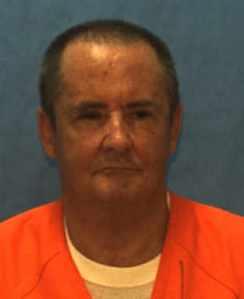 In June of 2009, Dustin Kolodziej filed a breach of contract lawsuit in a federal courthouse in Houston, Texas. Why did he do it and who did he file suit against? Why, he did it against one of Orlando’s most prominent attorneys, J. Cheney Mason, and he did it because Mason made a blanket statement about his client at the time, Nelson Ivan Serrano, on national TV. Serrano was on trial for murdering four people, including his former business partner and a state prosecutor.
In June of 2009, Dustin Kolodziej filed a breach of contract lawsuit in a federal courthouse in Houston, Texas. Why did he do it and who did he file suit against? Why, he did it against one of Orlando’s most prominent attorneys, J. Cheney Mason, and he did it because Mason made a blanket statement about his client at the time, Nelson Ivan Serrano, on national TV. Serrano was on trial for murdering four people, including his former business partner and a state prosecutor.
“I challenge anybody to show me, I’ll pay them a million dollars if they can do it,” Mason said on a Dateline NBC episode in a 2006. His defendant’s alibi placed him in an Atlanta motel at the time of the homicides at a Bartow (Polk County) manufacturing plant in 1997. Murdered in cold blood were Frank Dosso, Diane Patisso, George Patisso, and George Gonsalves. The prosecution had Serrano flying from Atlanta to central Florida and back to Atlanta in time to be caught on a hotel surveillance video. Mason said it was impossible to do. There was no way Serrano could have committed the murders and made it back to Atlanta, where he was recorded at the hotel. That’s what prompted him to issue the challenge.
Dustin Kolodziej took him up on it. Kolodziej had just graduated from South Texas College of Law and he retraced the steps Serrano took across two states. At the end of the final leg, he proved it could be done within the required time. He videotaped his excursion and sent it to Mason along with a letter demanding the million dollar payout.
“I’m really unconcerned about it,” Mason said back then. “When it’s over, somebody or some group of people out there are going to have to face the consequences of filing such a false, stupid lawsuit.”
Later that year, a federal judge in Texas dismissed the suit citing a lack of contacts with the state to establish jurisdiction. Also at issue was the statement, which was taken out of context. Mason said the comment was made in jest, and when his lawyers got the raw transcript from NBC, it showed the episode was edited. Not only was he joking when he made the statement, it was directed toward state prosecutors. It was reflected in that unedited interview.
“It was all done humorously and the transcript reflects that,” Mason said.
 No doubt, Cheney Mason has had plenty of courtroom battles, and he was able to add this personal victory to his list, but in the end, his client, Nelson Serrano, lost. On June 26, 2007, Judge Susan Robertssentenced him to death by lethal injection.
No doubt, Cheney Mason has had plenty of courtroom battles, and he was able to add this personal victory to his list, but in the end, his client, Nelson Serrano, lost. On June 26, 2007, Judge Susan Robertssentenced him to death by lethal injection.
On the day he joined the Anthony defense team, he said, “This case is going to be fun to try, and we will walk out of here with Casey in arm.”
He may be an excellent ‘shoot from the hip’ counselor, but at times, he’s more adept at shooting off his mouth.
FYI:
In July, 2007, Amy Edwards of the Orlando Sentinel broke down some of the public costs associated with his case.
Here’s a look at the Serrano case by the numbers, which are rounded.
$1 million plus
Price the Florida Department of Law Enforcement reports its investigation cost.
1,762
days in the Polk County Jail. Serrano was booked into the jail Sept.1, 2002 and booked out June 28, 2007.
$69,883
Minimum cost to house Serrano in the jail. Sheriff’s Office officials say the actual cost is likely more since Serrano was on suicide watch, which requires more security.
$68,000
Estimated cost of the salaries of State Attorney’s Office employees who were devoted to the case full time — two lawyers, one secretary, one investigator and media employee.
$36,657
State Attorney’s Office reports includes cost of expert and expert travel, court reporter, attorney travel and travel for witnesses.
$30,930
Jury-associated costs.
$29,926
Court reporter for all hearings
$29,857
Real-time court translator
$58,596
Public funds used for his defense, which include
$10,000
Jury consultant
$8,414
Court reporting
$975
Crime-scene processing
$3,532
Travel
$29,530
Investigation
$1,800
Mental health
$4,000
Polygraph expert
$290
Information and evidence
$56
Postage
A decision on this case was rendered in federal court